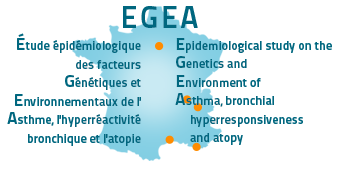Association of Forced Vital Capacity with the Developmental Gene NCOR2
Résumé
Background: Forced Vital Capacity (FVC) is an important predictor of all-cause mortality in the absence of chronic respiratory conditions. Epidemiological evidence highlights the role of early life factors on adult FVC, pointing to environmental exposures and genes affecting lung development as risk factors for low FVC later in life. Although highly heritable, a small number of genes have been found associated with FVC, and we aimed at identifying further genetic variants by focusing on lung development genes.
Methods: Per-allele effects of 24,728 SNPs in 403 genes involved in lung development were tested in 7,749 adults from three studies (NFBC1966, ECRHS, EGEA). The most significant SNP for the top 25 genes was followed-up in 46,103 adults (CHARGE and SpiroMeta consortia) and 5,062 children (ALSPAC). Associations were considered replicated if the replication p-value survived Bonferroni correction (p<0.002; 0.05/25), with a nominal p-value considered as suggestive evidence. For SNPs with evidence of replication, effects on the expression levels of nearby genes in lung tissue were tested in 1,111 lung samples (Lung eQTL consortium), with further functional investigation performed using public epigenomic profiling data (ENCODE).
Results: NCOR2-rs12708369 showed strong replication in children (p = 0.0002), with replication unavailable in adults due to low imputation quality. This intronic variant is in a strong transcriptional enhancer element in lung fibroblasts, but its eQTL effects could not be tested due to low imputation quality in the eQTL dataset. SERPINE2-rs6754561 replicated at nominal level in both adults (p = 0.036) and children (p = 0.045), while WNT16-rs2707469 replicated at nominal level only in adults (p = 0.026). The eQTL analyses showed association of WNT16-rs2707469 with expression levels of the nearby gene CPED1. We found no statistically significant eQTL effects for SERPINE2-rs6754561.
Conclusions: We have identified a new gene, NCOR2, in the retinoic acid signalling pathway pointing to a role of vitamin A metabolism in the regulation of FVC. Our findings also support SERPINE2, a COPD gene with weak previous evidence of association with FVC, and suggest WNT16 as a further promising candidate.
| Origine | Fichiers éditeurs autorisés sur une archive ouverte |
|---|---|
| licence |


